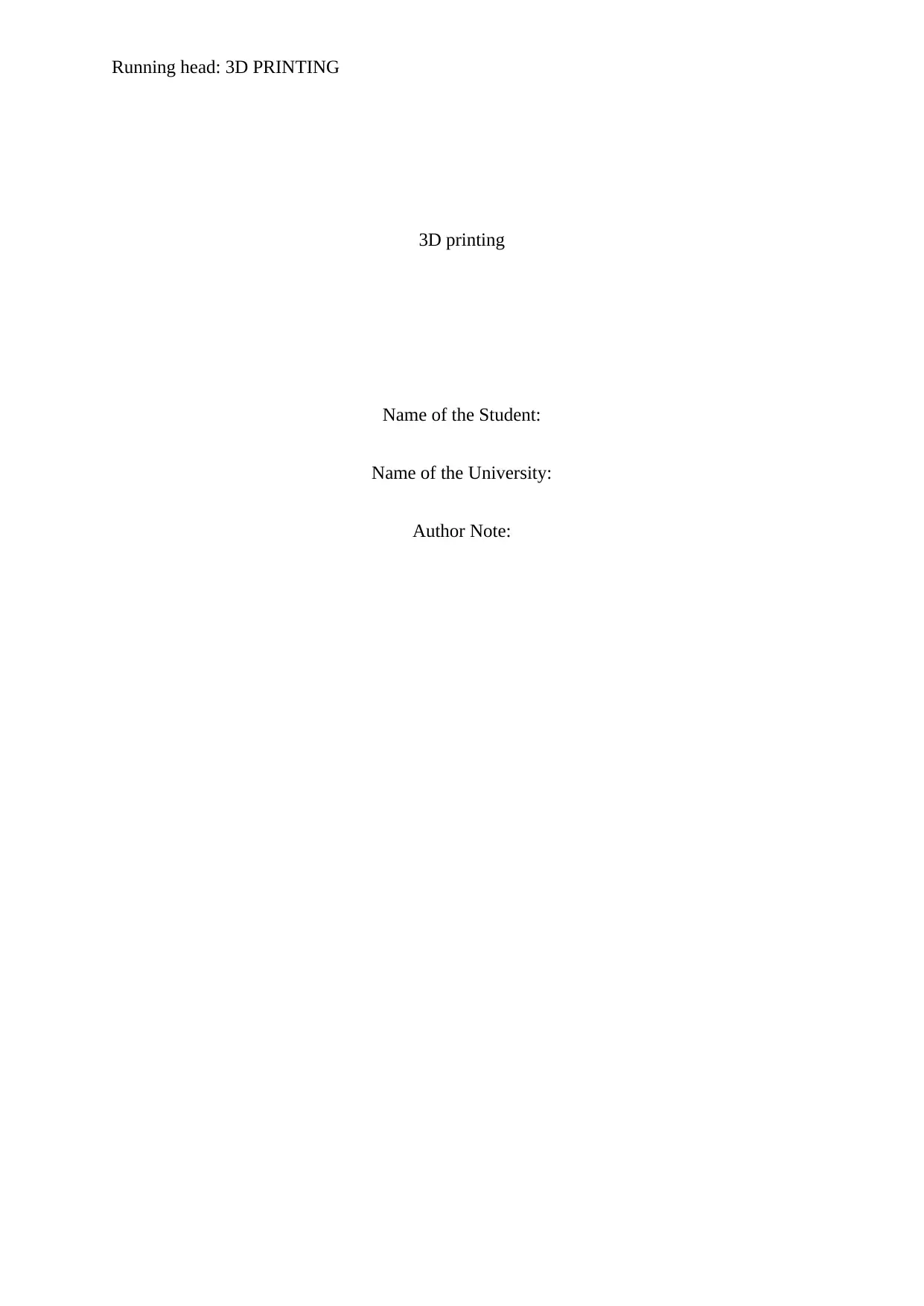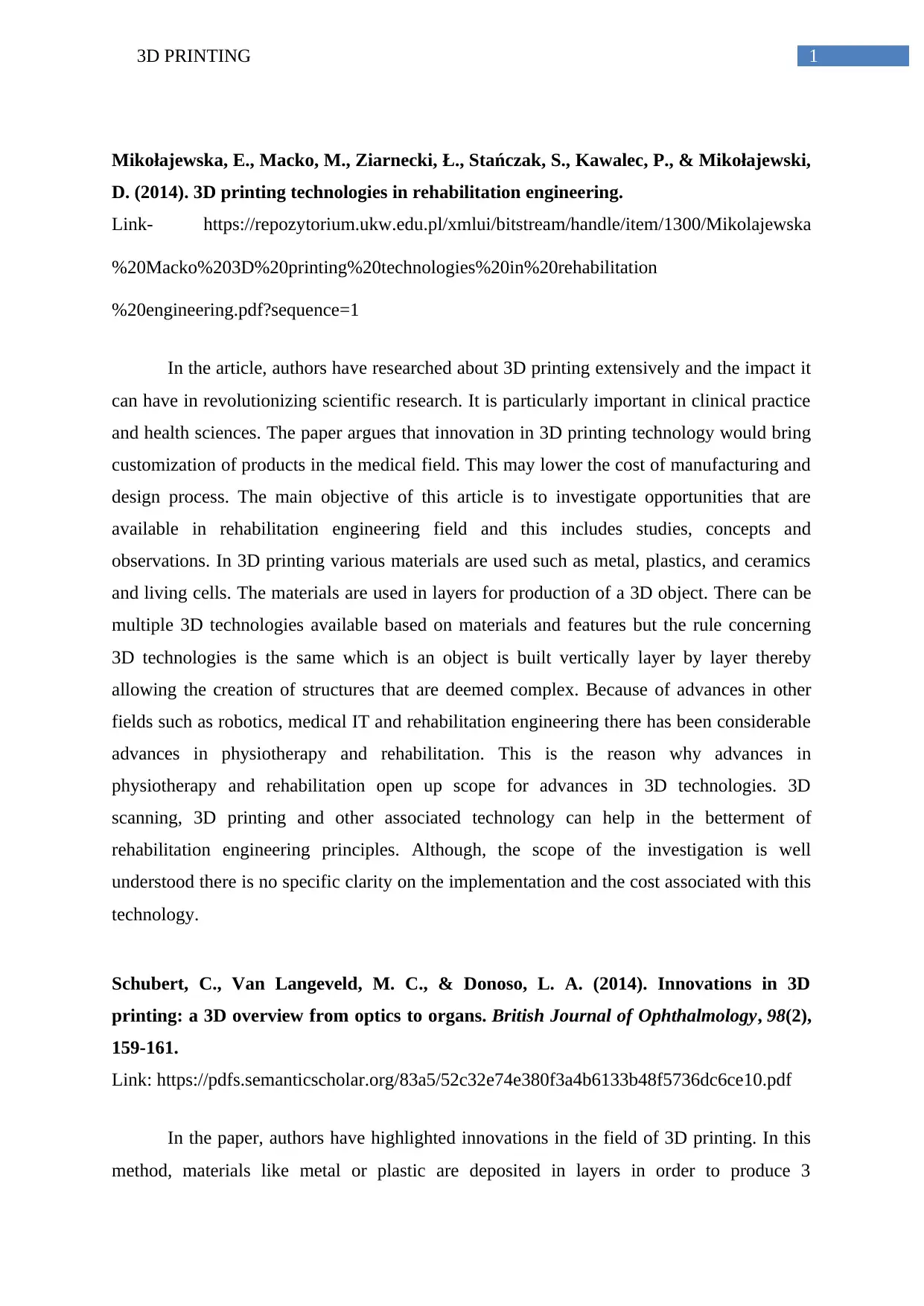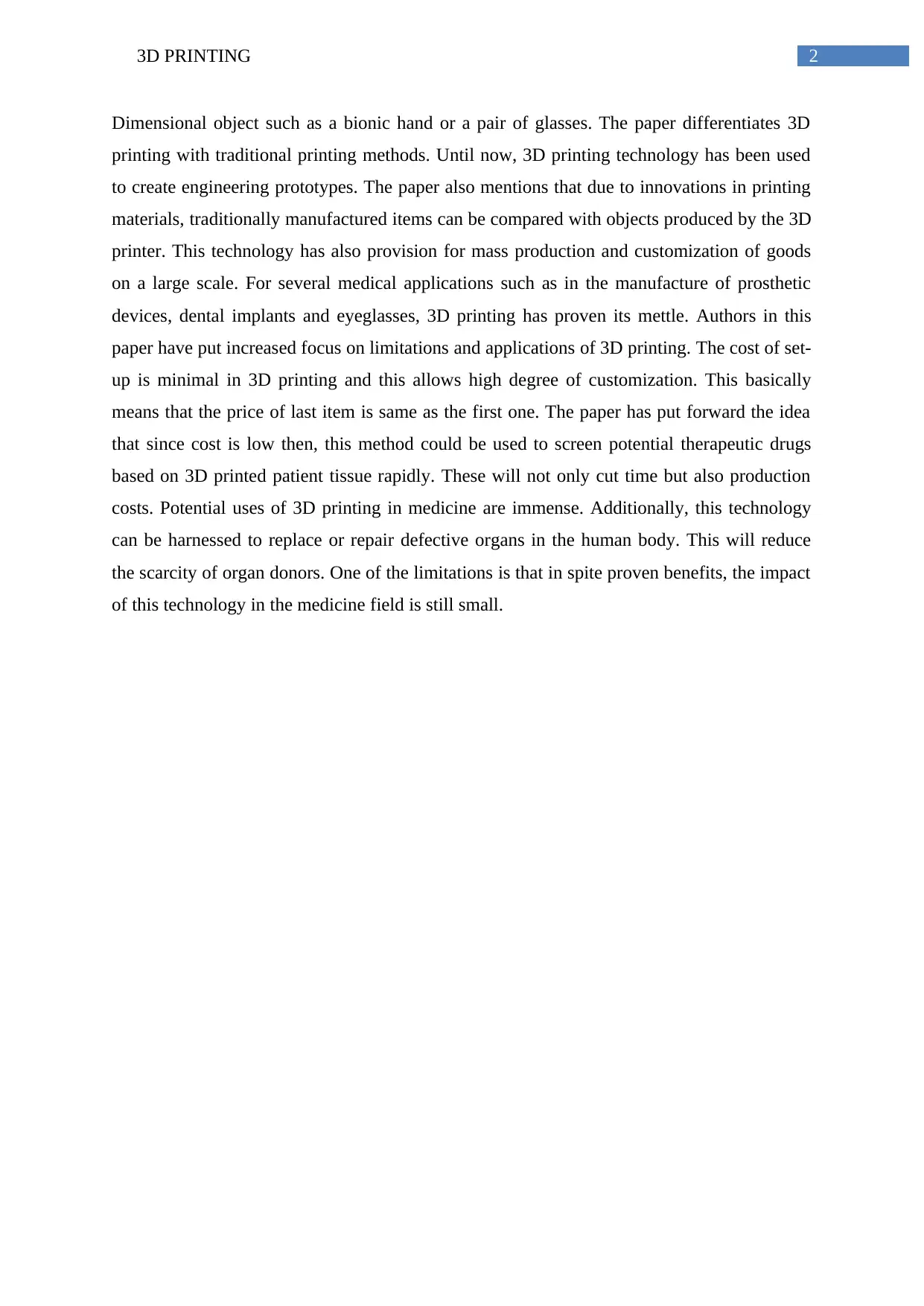A Report on 3D Printing Technologies in Healthcare and Medicine
VerifiedAdded on 2021/06/18
|4
|753
|200
Report
AI Summary
This report delves into the realm of 3D printing and its transformative impact on healthcare, drawing from two key research papers. The first paper explores 3D printing technologies in rehabilitation engineering, emphasizing the potential for customized medical products, cost reduction in manufacturing, and the creation of complex structures layer by layer. It highlights the integration of 3D printing with advancements in robotics and medical IT to enhance physiotherapy and rehabilitation. The second paper focuses on innovations in 3D printing, illustrating its applications in producing medical devices such as bionic hands, eyeglasses, and dental implants. It underscores the technology's ability to facilitate mass production and customization, and its potential to screen therapeutic drugs. While both papers acknowledge the benefits of 3D printing, they also recognize the existing limitations and the need for further research to fully realize its potential in the medical field, including organ repair and replacement.
1 out of 4











![[object Object]](/_next/static/media/star-bottom.7253800d.svg)